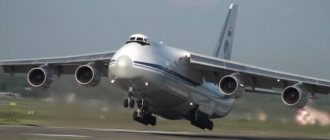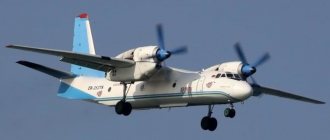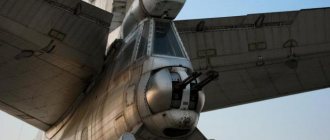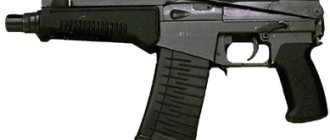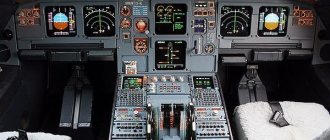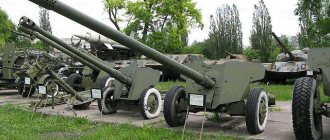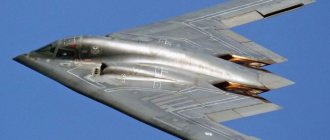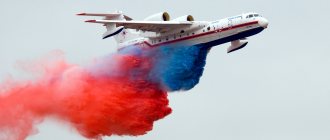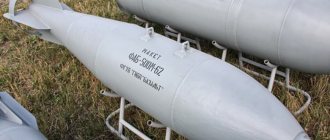An unpretentious, reliable and easy-to-operate machine that will “forgive” mistakes and will not let you down in battle—that’s how Soviet pilots described the Il-28 front-line jet bomber, which first took to the air on July 8, 1948, exactly 70 years ago. Egypt, Taiwan, Yemen, Nigeria, Laos, Kampuchea - this is not the complete track record of the winged veteran. About its features and examples of combat use - in the RIA Novosti material.
Competition between IL-28 and Tu-14 for a place in the sun
July 8, 2020 marked 70 years since the first Il-28 took off. Sergei Vladimirovich Ilyushin approved the preliminary design of the aircraft on December 12, 1948, despite the fact that the official task for the development of a front-line jet bomber was entrusted to the A. N. Tupolev Design Bureau. The aircraft designer, confident in the advantages inherent in the Il-28, decided to continue working on his own initiative and build the first prototype aircraft. On June 12 of the same year, the Il-28 was included in the MAP open construction plan.
After the end of the Great Patriotic War, the country began production of experimental and production aircraft with jet engines. At first, captured engines were used, which were more suitable for fighters rather than bombers. The way out of the situation was the acquisition of English Rolls Royce engines, which became the basis for the new Soviet VK-1 engines, with which the Il-28 took off in 1949. It was interesting to receive these engines. There is a story that says that the British did not want to sell engines to the USSR, but the chief designer of OKB-155, A. I. Mikoyan, made a bet with the president when he was on a business trip in the UK. If they win a game of billiards, the British will sign a contract for the sale of engines. This story cannot be confirmed or denied, but in 1946 a Soviet trade representative reported the possibility of purchasing engines in Great Britain.
Production of the Il-28 began to be established at 3 plants at once: No. 30 in Moscow , No. 166 in Omsk and No. 64 in Voronezh. However, the vehicle has not yet been officially accepted into service. The question was what to choose: Il-28 or Tu-14 . They both had their advantages and disadvantages. According to Ilyushin, there were heated debates on this score, which were resolved personally by Joseph Stalin . You can find a lot of speculation in the press about the conditions under which the decision to mass produce a front-line bomber was made. According to one of them, the leadership of the Air Force Research Institute insisted on adopting the Tu-14.
However, it, together with the Air Force Commander-in-Chief, approved the corresponding act, which directly states that the Il-28 “satisfies the requirements of a front-line jet bomber and is recommended as a model for mass production and adoption.” It can be assumed that the head of the Air Force Research Institute, Vladimir Koblikov, . In 1950, he was replaced in this position by General Mikhail Redkin , and in October of the same year, after the next tests of the Tu-14, a note appeared in the report about them that, given the lack of a modern high-speed bomber capable of carrying mine-torpedo weapons, in combat units, the Tu-14 should be recommended for serial production for armament only with naval aviation due to the long take-off run and long take-off distance, as well as insufficient speed. As a result, the place of the front-line bomber in our aviation was taken by the Il-28, which according to NATO classification was called the “hound” .
Acquaintance
You may be interested in: A conscript is... Definition, meaning
The Il-28 aircraft is the first Soviet front-line jet bomber capable of transporting tactical nuclear weapons. In the NATO classification, this model is listed as Beagle “Hound”. The Il-28 aircraft (photo below) was designed at the experimental design bureau of the S.V. Ilyushin Aviation Complex. A group of designers was awarded the Stalin Prize.
Design and equipment of the Il-28
The aircraft was created for a crew of three, which included: a pilot, a navigator and a rear gunner-radio operator. They were placed in pressurized cabins, which were located in the front and rear parts of the aircraft, and since the IL-28 had a high speed, measures were taken to emergency escape if necessary. The workstations of the navigator and pilot were equipped with ejection seats, and the gunner-radio operator could use the hatch below, the folded lid of which protected the person from the air flow. The navigator was in the ejection seat during takeoff, landing and in combat, and when working with the bomber sight, he moved to another seat.
The IL-28 had a straight wing. Equipped with a single-slot flap, the wing provided good takeoff and landing characteristics. To ensure the required controllability and stability of the aircraft at any flight speed, it was decided to install a swept tail. To simplify maintenance, the aircraft was equipped with a longitudinal technological connector, allowing access to all structural elements, which was a first in the practice of domestic aircraft construction.
Early cars did not have an anti-ice system. It appeared on the seventh series of aircraft from factory No. 30. In subsequent episodes the following appeared: curtains for the moving part of the cockpit canopy and for the navigator; additional cabin ventilation; the round window, made to prevent fogging of the cockpit glazing during takeoff, was moved from the movable part of the canopy to the left glass of the visor.
Many changes were made to the 1951 series. The model was aircraft No. 50301801. It had an improved Il-KbM (Il-K6-51) , lighter by 50 kg. In addition, the rear fuselage of the aircraft was lightened; valves appeared on the fuel tanks to prevent loss of fuel if they were damaged; electric heating of the windows of the pilot's and navigator's cockpits; protection of engine control rods from icing and much more. On aircraft produced by Plant No. 30 (now the Russian Aircraft Corporation MiG), starting with the 18th series, a special anti-surge device was installed on the engines. To extinguish the “popping” pressure, air was turned on for 2-3 minutes. Later, the emergency braking system was improved by making separate drives for the left and right wheels. Previously, the same pressure was applied to both; increased the cross-section of the hydraulic system lines, speeding up the release of the wheels; strengthened the spring cylinder, which released the nose landing gear in an emergency.
At the beginning of 1951, the PB-28 braking parachute was tested for the first time on the Il-28, which significantly reduced the vehicle's mileage during landing. Il-28 were the only aircraft of the Soviet air force that, with low clouds with rain and snow hanging over the capital, were able to fly at low altitude over Red Square, paying military honors to I.V. Stalin.
About engines
You may be interested in: The most expensive metal detector: review of the best models, characteristics, reviews
The underwing nacelles became the location of the VK-1 power units. To control the engines, the aircraft has cable wiring. During startup, each VK-1 is spun up using an electric starter. The fuel system consists of fuselage soft rubber tanks. Their total capacity is 7908 liters. Only the left engine is equipped with a hydraulic pump. If the hydraulic system suddenly fails, the flaps are lowered from the pneumatic system and the wheels are braked emergencyly. Also, with the help of air, the cargo compartment, namely the bomb bay doors, opens. Both engines are equipped with pneumatic pumps. In addition, the Il-28 has emergency cylinders containing compressed air.
Armament and modifications of the Il-28
The main armament of the bomber were bombs with a total weight of up to 3 tons. The list of bomb cargo included high-explosive, incendiary, fragmentation, concrete-piercing and other ammunition. The aircraft's defensive armament consisted of four 23mm cannons. Il-K6 rear mount with two NR-23 cannons.
Il-28 became the first carrier of the atomic bomb. It was a 30-kiloton Tatyana (“product 244N”) with an RDS-4 charge. The weight of the bomb was 1.2 tons. To carry nuclear weapons, the aircraft was equipped with the appropriate equipment, including equipment that records the parameters of the explosion. Light-protective curtains were installed in the crew cabins. The aircraft first used a nuclear bomb on August 23, 1953 . They dropped “Tatyana” from 11 kilometers, which exploded 600 meters from the ground at a training ground in Semipalatinsk.
More than four hundred such bombers were prepared. In September 1954, the only exercise involving the use of nuclear weapons took place in the Orenburg region at the Totsky training ground. The task of the Il-28 was to escort the aircraft carrying the Tu-4 bomb and photograph the exit of the “special product” from its cargo compartment and the subsequent nuclear explosion. Several bombers were converted into radiation reconnaissance aircraft, which replaced the radio-controlled Yak-9V . Unlike them, the Ilas were piloted by pilots, and the cockpits of the aircraft were protected by lead plates. The plane itself was a difficult target for fighters. The high speed and maneuverability of the Il-28 made it possible to successfully repel attacks from the rear hemisphere.
The Il-28 bomber had 17 modifications:
- Il-28 - jet front-line bomber;
- Il-28A is a front-line bomber equipped to be armed with tactical nuclear bombs;
- Il-28ZA - equipped for weather reconnaissance;
- IL-28LL - flying laboratory;
- Il-28M is a radio-controlled aircraft intended for use as a target in air defense exercises;
- Il-28P - “postal” modification of the aircraft;
- Il-28PL is an aircraft equipped for anti-submarine warfare;
- Il-28R - front-line reconnaissance aircraft;
- Il-28RTR - designed for electronic reconnaissance;
- Il-28REB - modification designed for electronic warfare;
- Il-28S - experimental modification, equipped with a swept wing and VK-5 engines;
- Il-28T is an experimental torpedo bomber model that was not put into service;
- Il-28U - training aircraft;
- Il-28Sh - jet front-line attack aircraft;
- Il-28 (UAV) is a radio-controlled modification of the aircraft. Development continued from 1956 to 1958 and was not completed;
- IL-28 on tracked traction - modification of the aircraft to expand its operational potential in various conditions;
- IL-28 for towing targets - this modification does not have a stern rifle installation, instead of which a 2800 m long cable is attached, intended for towing a target.
Experienced fighter
The first mention of the Il-28 in a military conflict zone dates back to the Korean War of 1950-1953. According to Western sources, about 70 front-line bombers with Soviet crews were stationed at Chinese airfields bordering the DPRK. It was assumed that they would be lifted into the air if UN troops again crossed the 38th parallel, along which the front line had stabilized. However, there is no reliable data on the use of Il-28 in the Korean War.
These front-line bombers received their official baptism of fire in 1956 during the Suez crisis. Egyptian Il-28s carried out several attacks on enemy troops in the Sinai. There were no losses from return fire, but seven of the 50 aircraft were destroyed on the ground during retaliatory air raids by Britain, France and Israel. In 1962, Egypt used bombers in the Yemeni civil war, striking monarchists and Saudi Arabia. In June 1966, a single Il-28, accompanied by fighters, almost completely destroyed the Saudi Arabian airbase at Khamis Mushait.
© Photo: Public domain
An Egyptian Il-28 strikes Israeli army positions in the Sinai during a “war of attrition”
Egyptian bombers actively participated in the “war of attrition” of the 1969-1970s. Reconnaissance modifications of the Il-28 were used to disrupt the fire system of Israeli HAWK anti-aircraft missile systems. Egyptian planes provoked the Israelis to launch air defense missiles, after which they made evasive maneuvers. Not a single Il-28 was shot down, which once again confirmed its outstanding flight characteristics. In addition, on the night of January 22-23, 1970, Egyptian Il-28s struck the first blow at El-Arish, destroying several buildings. On the same day, bombers attacked Israeli paratroopers who invaded Sheodan Island.
Il-28Sh
Il-28s were used in the Nigerian civil war in 1969-1970. In particular, they destroyed the Uli airfield, the only one in Biafra capable of receiving heavy aircraft. During the Kampuchean-Vietnamese conflict in the late 1970s, Pol Pot fighters used bombers. Finally, Il-28s fought in Afghanistan in 1989-1992 on the side of government forces. The Taliban failed to shoot down a single one, although they still had many Stingers at their disposal.
Operation of the aircraft in the world and further fate
The IL-28 turned out to be a very reliable aircraft that forgave piloting errors. the Tu-2 and A-20 Boston piston bombers in combat units. The new aircraft quickly won the sympathy of the crews. For the first time in the USSR, so much attention was paid to the working conditions of aviators. People accustomed to the cold and noisy cabins of piston bombers were surprised at the comfort on board the new aircraft, convenient layout and wealth of equipment. The pilots noted the simpler technique of piloting the Il-28, compared with the Tu-2, increased speed and good maneuverability. For navigators, the aircraft opened up new techniques for aircraft navigation and bombing, especially in difficult weather conditions. The technical staff received an easy-to-maintain machine.
In addition to operation in the USSR, the aircraft was delivered to China, where they then mastered its production at the aircraft plant in Harbin and called it N-5 . Six Chinese aircraft were sent to Romania, and 4 Il-28 aircraft flew in Finland, which acted as target towing aircraft. The aircraft was operated by China, Egypt, Algeria, Bulgaria, East Germany, Czechoslovakia, North Korea, North Korea, Poland, Vietnam, Iraq, Yemen, Morocco, Cuba, Somalia, Syria, Nigeria, Indonesia, Afghanistan, where the aircraft performed well in mountainous terrain . In total, from 1949 to 1955, 6,316 aircraft .
In the early 60s, on the initiative of Nikita Khrushchev, the massive removal of the Il-28 from service began. A large number of completely new vehicles were written off and barbarously destroyed by bulldozers right in the parking lots, which caused a sharp negative reaction from the entire personnel of the air regiment. The fates of thousands of aviators were also mercilessly destroyed. Who were discharged from the Air Force.
Few were lucky enough to stay. The veterans who survived this painfully remember how they buried their dream and with tears in their eyes said goodbye to the plane that had become a reliable and loyal friend for them. Some of the aircraft were transferred to flight schools and only a small part of the surviving Il-28s were converted into target towing aircraft and were used until the early 1980s. Another part of the aircraft was converted into Il-28M radio-controlled flying targets, which were used in practical shooting by air defense missilemen.
The Il-28 also served in civilian life when the planes were given to Aeroflot , where they were used to deliver mail.
Thus, the first Soviet jet bomber established itself as an unpretentious and easy-to-fly and maintain aircraft, which was in service with many countries.
About radio equipment
The IL-28 was equipped with the PSBN-N radar system, ARK-5 radio compass, RV-2 and RV-10 radio altimeters, RSIU-ZM radio stations, SRO radar transponder and SPU-5 intercom. Aircraft designed to perform reconnaissance missions are equipped with photographic equipment: three AFA-33, AFA-BA-40, AFA-75MK. The IL-28 has a FRL-1M photo attachment, with the help of which information is recorded from the screen of the radar system. In December 1953, a government decree was issued according to which the PSBN was replaced by the Kurs radar. Reconnaissance aircraft have containers containing ASO-28 dipole reflectors and special “Sodium” equipment, the task of which is to reproduce radio interference.
Notes
- Yakubovich N.V.
Ilyushin aircraft. The best of the best. - M.: Yauza; EKSMO, 2009. - P. 213 - 480 p. — (War and us. Soviet aviation) — ISBN 978-5-699-33921-1. - Dayan Moshe, Tevet Shabtai. Arab-Israeli wars 1956,1967. - M., 2003, pp. 122-123.
- Vic Flintham. High Stakes: Britain's Air Arms in Action 1945-1990, Pen & Sword Aviation, 2009, p.209
- N. Yakubovich, The first jet bomber Il-28. Stalin's atomic “butcher”, p.70
- Shlomo Aloni, Israeli Mirage and Nesher Aces, p.82
- Post-war attack aircraft. A. Kotlobovsky
- ↑ Yakubovich N.V.
Bomber Il-28. Part 2. // Aviation collection (supplement to the “Modeler-Constructor” magazine). - 2006. - No. 6. - P. 27-30. - ↑ Egorov Yu. A., Kotlobovsky A. V.
.
A successful plane that had bad luck. // Aviation and time
. - 1997. - No. 1. - P. 16-20. - ↑
- Robert F. Kennedy
Thirteen Days. A Memoir of the Cuban Missile Crisis. - New York: W. W. Norton and Company, 1969. - P. 27.
Aviation accidents involving an aircraft
Memorial sign at the site of the disaster on September 12, 1957
On September 12, 1957, the Il-28 crashed during a test flight near the village of Pokrovskoye, Moscow Region (now the Voronovskoye settlement of Moscow). Three people died: test pilot 3rd class K. B. Kabatov, test navigator V. B. Goremykin and flight radio operator I. N. Ponkratiev.
On the night of January 21-22, 1958, an Il-28R reconnaissance aircraft crashed into Mount Naiboretskaya in the Dolinsky district of the Sakhalin region during a training flight while landing. All four crew members were killed.
On October 27, 1976, when landing at the airfield of the Tambov VVAUL in conditions of deteriorating meteorological minimum, an Il-28 crashed under the control of the head of the school, Major General of Aviation Yuri Aleksandrovich Eremeev, and the navigator - the head of the political department of the school. We flew to the training regiment in Michurinsk (15-20 minute flight). The air gunner-radio operator was not taken on the flight, and when he returned home late at night, his wife, seeing him through the peephole of the door, fell unconscious twice. Already in our time, in memory of General Eremeev Yu.A. A square in the former military camp of the school is named after him.
Surviving copies
| Photo | Type | Board number | Location |
| IL-28 | 40 | Tokmak, Chui region, Kyrgyzstan | |
| IL-28 | 38 | Skulte, Latvia | |
| IL-28 | 16 | Central Museum of the Armed Forces, Moscow | |
| IL-28 | Museum of the Irkutsk Aircraft Plant, Irkutsk | ||
| IL-28 | 07 | Museum of the Air Force of the Northern Fleet, village. Safonovo, Murmansk region | |
| IL-28 | 01 | village Katunino, Arkhangelsk region | |
| IL-28 | 01 | The area named after Gagarina, Orsk | |
| Il-28R | 33 | Main branch museum of the history of civil aviation, Ulyanovsk | |
| Il-28R | 01 | Museum of Technology of Vadim Zadorozhny, Moscow region | |
| Il-28R | 01 | Long-Range Aviation Base of the Russian Air Force, Tambov | |
| IL-28 | 04 | Central Museum of the Russian Air Force, Monino | |
| IL-28 | 08 | Petrovsk, Saratov region. | |
| Il-28U | without b/n | st. Ilyushina, Vologda, Vologda region | |
| IL-28 | 15 | military unit 95109, Vyborg | |
| IL-28 | 21 | Alley of Aviators GLAU, Kropyvnytskyi, Ukraine | |
| IL-28 | With. Chaikino, Dzhankoy district, Ukraine | ||
| IL-28 | 26 | With. Volnoye, Dzhankoy district, Republic of Crimea | |
| IL-28 | 30 | Baltimore airfield, Voronezh | |
| IL-28 | 30 | CHVVAUSH, Chelyabinsk | |
| IL-28 | 42 | Chernyakhovsk, Kaliningrad region. | |
| IL-28 | 55 | village Chkalovsk, Kaliningrad region. | |
| IL-28 | 01 | Krechevitsy airfield, Novgorod region. | |
| Il-28U | 0501 | Prague, Czech Republic | |
| IL-28 | 6926 | Prague, Czech Republic | |
| Il-28R | 2404 | Letecke Historicke Spolecnosti, Viskov, Czech Republic | |
| IL-28 | 4 | Poznan, Poland | |
| Il-28R | 72 | Polish Aviation Museum, Krakow-Rakowice, Poland | |
| Il-28U | S3 | Polish Aviation Museum, Krakow-Rakowice, Poland | |
| IL-28 | 10 | Witkowo, Poland | |
| IL-28 | 47 | Lodz, Poland | |
| IL-28 | 52 | Kolobrzeg, Poland | |
| Il-28R | 69 | Polish Navy Museum, Gdynia, Poland | |
| Il-28R | 65 | Muzeum Katyńskie w Warszawie, Warsaw, Poland | |
| Il-28R | NH-4 | Central Aviation Museum, Finland | |
| Il-28B | 208 | Bundeswehr Aviation Museum, Berlin, Germany | |
| IL-28 | 50 | War Museum, Jonow, Poland | |
| IL-28 | Trekhgorny "s/c Stone Flower", Russia, Chelyabinsk region. | ||
| IL-28 | 30 | Shagol (airfield), Chelyabinsk, Russia | |
| IL-28 | 7 | Parco Tematico-Museo della'Aviazione, Rimini, Italy | |
| Il-28R | 43 | Plovdiv, Bulgaria | |
| IL-28 | 55 | Szolnok, Hungary | |
| Harbin HJ-5 | 408 | Fetesti, Romania | |
| Harbin H-5R | 308 | Fetesti, Romania | |
| Harbin H-5 | Bacau, Romania | ||
| IL-28 | 405 | Bucharest, Romania | |
| IL-28 | 038 | Cheongju, South Korea |
